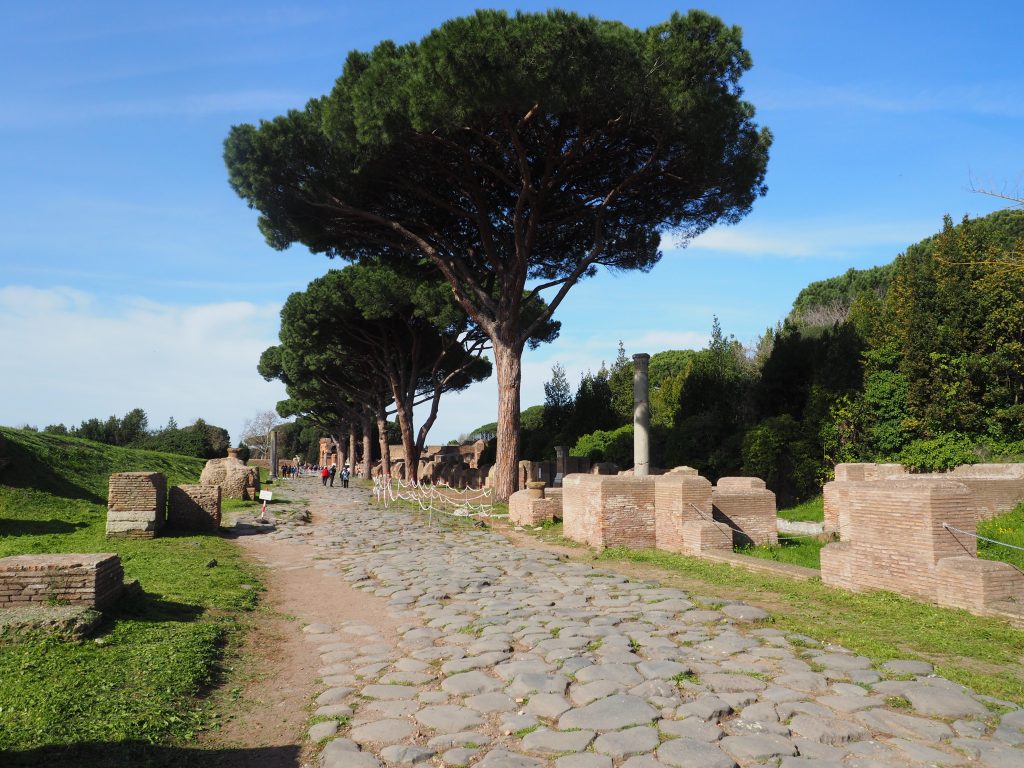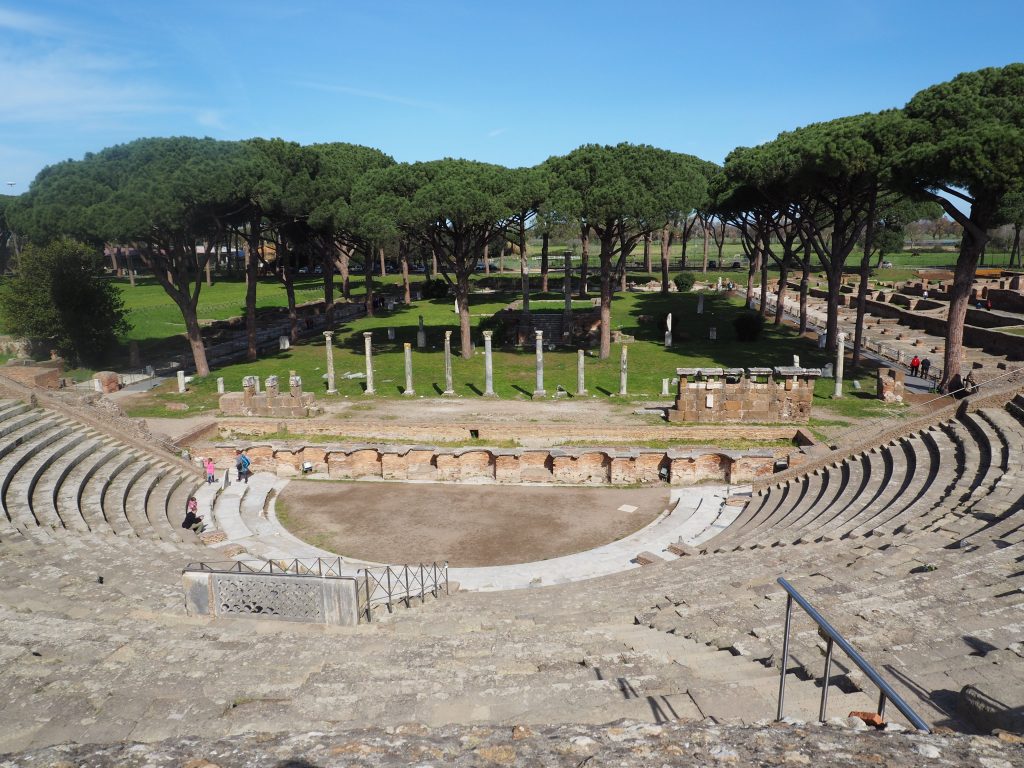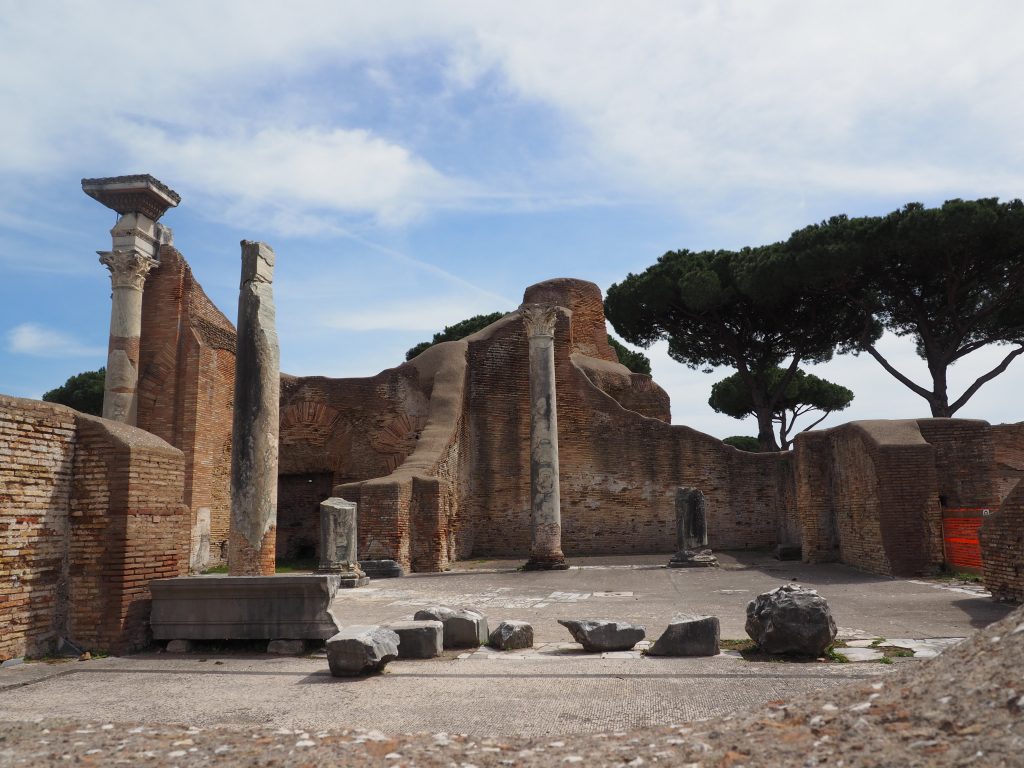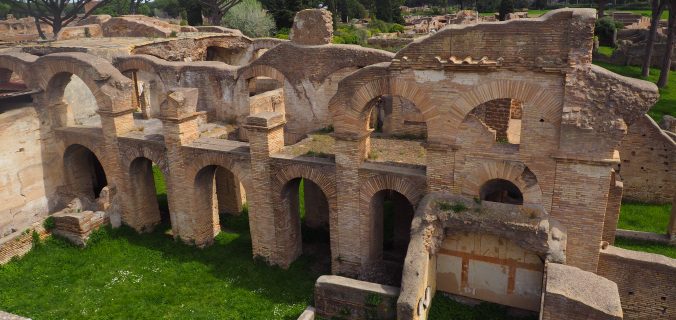In the past Ostia was the port of Rome and nowadays Ostia Antica is the second largest archaeological excavation site in Italy – only Pompeii being larger.
The town of Ostia was allegedly founded around 620 B.C. by Roman king Anco Marzio (lived cca from 675 B.C. until 616 B.C.), ruled from 641 B.C. until 616 B.C. In that time this place was the mouth of the Tiber river into the sea and rock salt was mined here. Mouth is ostium in latin and this is the origin of the name Ostia. However up to now no archaeological traces of this era have been found here and so it remains in legendary reports by Livy.
In the 4th century B.C. there was a castrum = military camp – fortress of large tufa blocks. From here the city began to enlarge. Appr. since 300 B.C. it was the main support point of Roman maritime forces. It became the most important suburb of Rome and the most important commercial port of the capital. Under Trajan and Hadrian in the 2nd century A.D. Ostia was at its best.






Mitthras was a Persian god of light but his cult has reached Rome and partly Greece, too. He was the god of light arriving before the sun above the mountains. He won the battle with the god of the sun. Then he accomplished several hard tasks and he had to slay a big, strong bull repeatedly, as it annually grows again and again. He also helped people in need and sorrow and protected them in bad fortune and wars. He accompanied the souls of the dead to the beyond, there he gave them a drink of wine and blood of a slain bull. That provided them immortality. The arrival of Christianity brought about the end of Mitthras cult. It is very interesting, that the birthday of Mitthras and Crist is the same, as well as baptism by submersion in water, immortality of the soul and others. Of a large amount of temples Mitthras had in Rome best preserved is in the Basilica of Saint Clement in Laterano. There is an artificial cave – Mithras temple – under the basilica apsis.


